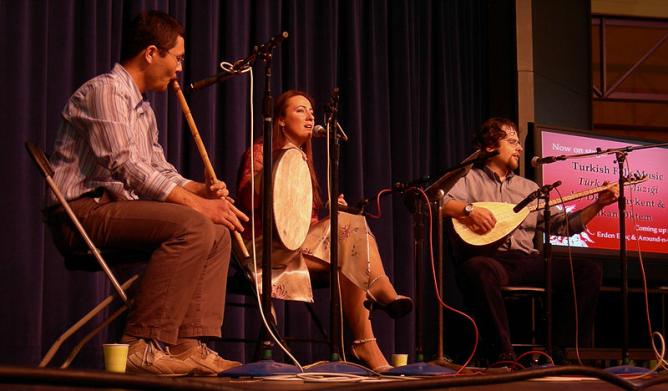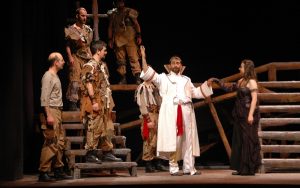Turkish folk music has a unique structure, combines the distinct cultural values of all civilisations which have lived in Anatolia and the Ottoman territories in Europe.
FOLK MUSIC
Turkish folk music has a unique structure which includes regional differences under one umbrella, giving rise to a wealth and variety the like of which can seldom be seen anywhere else in the world.
Distinct from Turkish folk music is Ottoman military music, now performed by the Mehter Takimi (Janissary Band) in Istanbul, which originated in Central Asia, and is played with kettle drums, clarinets, cymbals and bells.
The mystical music of the Whirling Dervishes is dominated by the haunting sound of the reed pipe or ney, and can be heard in Konya during the Mevlana Festival in December.
FOLK MELODIES
Melodies of differing types and styles have been created by the people in various spheres and stages of life, joyful or sad, from birth to death. Minstrel singers, accompanying themselves on the saz, played a most important role in the development and spread of Turkish folk music.
SCALES, RHYTHM AND BEAT
Although Turkish folk music melodies possess the same note and scale modules as traditional Ottoman Classical Music, the melodies known as Makam (similar to the medieval concept of mode) in Turkish folk music can be known by different names depending on the region, such as: Besiri, Garip, Kerem, Misket, Mustezad.
Simple beats such as 2/4, 4/4 and 3/4, irregular beats such as 5/8, 7/8, 9/8, 7/4 and 5/4, and mixed beats such as 8/8, 10/8 and 12/8 are used in Turkish folk music.
VARIETIES OF FOLK MUSIC
Turkish folk music accompanied by words can be classified under the following headings:
Turku, Kosma, Semai, Mani, Destan, Deyis, Uzun Hava, Bozlak, Agit, Hoyrat, Maya, Bogaz Havasi, Teke Zortlatmasi, Ninni, Tekerleme.
These are divided into free forms or improvisations with no obligatory metrical or rhythmic form, known as Uzun Hava, and those which no have a set metrical or rhythmic structure, known as Kirik Havalar. Both can also be employed at the same time.




